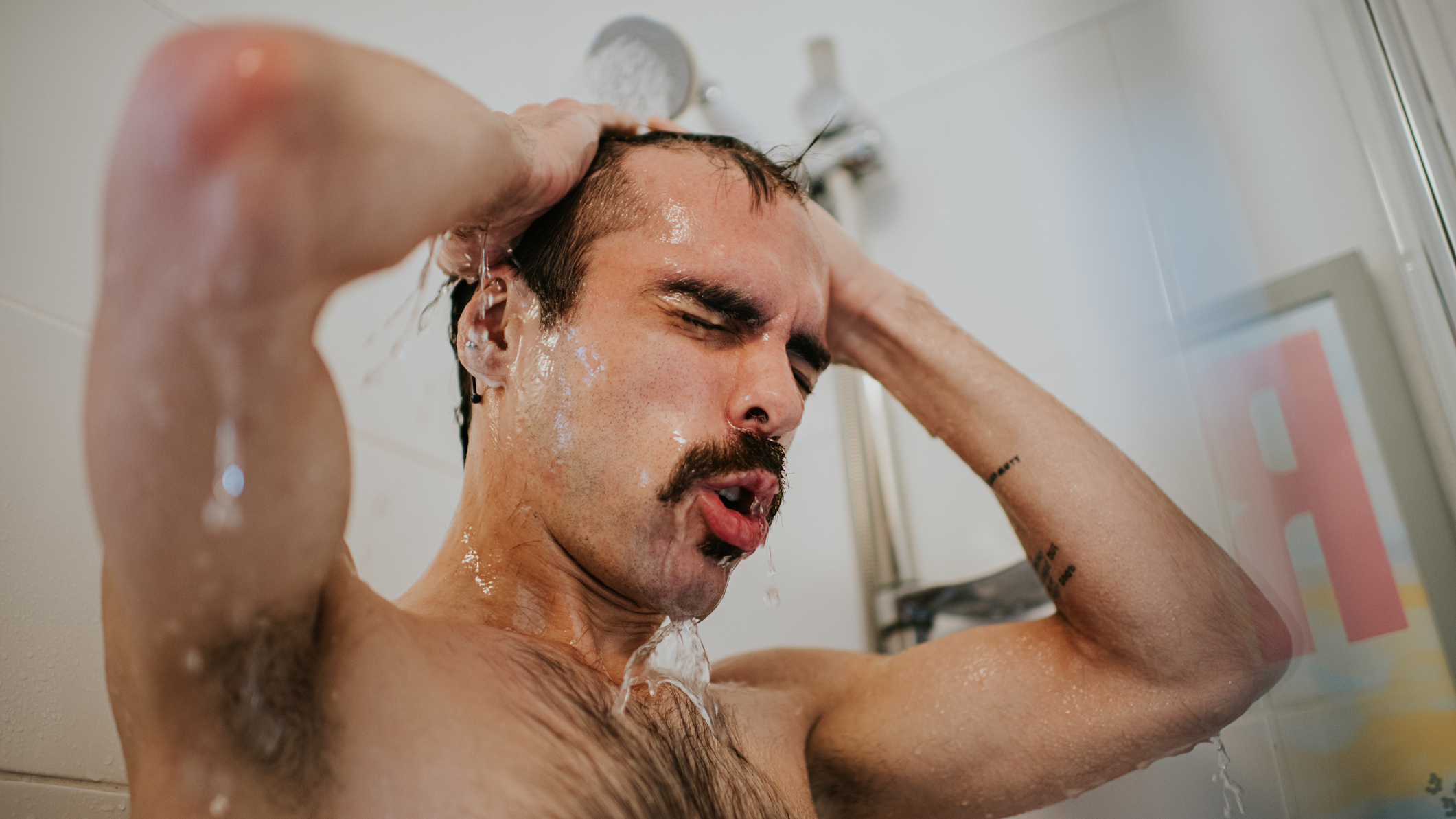
Hot showers are one of life's great pleasures. Like a generous bear hug, they make everything feel better. But for the likes of Wim Hof, the self-styled Iceman, and an army of fellow advocates, cold showers are far superior.
Cold-water immersion via ice baths and cold-water swimming has been credited with delivering a raft of health benefits.
For instance, a study from the Netherlands found that taking 30-second cold showers every morning for 60 days could decrease the number of sick days taken over a year by 29%.
Contrast therapy, in which you alternate between hot and cold, is another method said to reap similar returns. In late 2024, I gave this a try as part of London boutique studio 1Rebel's latest concept, RESET, where I moved between a hot sauna and cold plunge for 20 minutes.
It was mildly unpleasant—but then again, so is exercise, and that's evidently good for you.
Having dipped my toe in the water, so to speak, I wanted to learn if I could harness the same benefits at home, and so spent my Christmas enduring ever-increasingly cold showers. Here's what I learned about the benefits of cold showers, how often to take them and how cold is cold enough.
How to start adding cold showers to your regime
Before my first cold blast, I consulted Louise Mortimer, founder of The Spxce and 1Rebel's recovery expert who's trained in breathwork and cold exposure. "While cold showers aren’t as intense as contrast therapy or full immersion, they still stimulate your body’s adaptive responses, helping improve circulation, immune function and mental focus," says Mortimer.
To minimize the mental and physical shock that can accompany cold showers, Mortimer stressed it was important to first take a few minutes to prime your mind for what's to come.
"Start by sitting and breathing in and out through the nose as slow and calm as possible. After a few rounds start to extend the length of the exhale. Take the same amount of breath, but breathe out for twice as long." Next, she said, follow this step-by-step guide.
- Start with lukewarm water to "acclimate your body".
- Gradually reduce the temperature to cold over 30-60 seconds—cold being between 10-20˚C (50-68˚F). Mortimer says that most of the benefits come once you're used to tolerating temperatures below 10˚C (50˚F) but to start out at around 15˚C (59˚F).
- Stay in the cold water for 2-5 minutes, focusing on steady, deep breaths to manage the initial discomfort.
- Move the water across your body, targeting large muscle groups like your back, chest and legs.
- Avoid the temptation to crank up the temperature once you're done. "Finish with cold water to lock in the benefits," says Mortimer.
As a general rule, Mortimer recommends taking cold showers up to four times a week, starting with shorter durations of around 1-3 minutes and gradually increasing these to 5-10 minutes as the body adapts. "For the best results consistency is key, but it’s important to listen to your body to avoid overstressing it," says Mortimer. "If you’re unwell or, for women, during certain phases of the menstrual cycle, it might be better to take a break. Consistency matters, but always prioritize your overall health."
Putting cold showers to the test
With Mortimer's instructions on board, I set myself the task of taking cold showers on alternating days for two weeks over the Christmas and New Year holidays. On day one, I found the whole experience surprisingly tolerable. Rather than cranking the temperature dial to full lock, I dropped the mercury slowly but surely every minute or so.
With each turn I felt an initial shiver, then after a few seconds a wave of warmth spread over my body as it adapted to the cooler water. Rather than testing my limits of discomfort, I clocked out at five minutes feeling pleasantly refreshed and ready to attack the day—which incidentally was December 25.
Two days of gluttony later, I was more than ready for my next cold shower. This time I pushed the temperature lower and tracked my heart rate with an Apple Watch to see if it would trigger any tangible changes to my vital signs.
Starting at 60bpm, my pulse quickened to 75bpm as the cold water started flowing, then settled at 55bpm after another five minutes of icy subjection. This time, along with feeling minty fresh, I also noticed how I left the shower with my mind fully focused on work and fitness goals for the year ahead.
This might simply be the psychosomatic relationship of doing something perceived to be healthy with New Year's resolutions on the mind that sparked intentions to follow more healthy habits. Either way, it quickly dispersed the lethargy that can set in over the holidays.
By my third and fourth sessions, however, I started to realize some of the drawbacks of cold showers if your goal, like mine, is to build muscle and strength. I like to work out first thing in the morning, and often this involves exercises designed to cause an inflammatory response in the muscles, forcing them to grow back thicker and stronger.
Immediately following these workouts with a cold shower, Mortimer tells me, "may blunt muscle adaptation by reducing inflammation and blood flow too much, which can impede muscle growth". Instead, she suggests, I should use cold showers before a workout or on rest days.
It's a minor inconvenience, but as a result, I find I either forgo the cold element of my post-workout showers or have to cram them into days when I'm not exercising—if I can force myself out of bed early enough before my one-year-old toddler wakes up. Most of the time this is a losing battle.
Midway through my two-week test I wanted to see how my experience compared with a friend and former amateur rugby player Alasdair MacLaine, who has been dabbling with ice baths and cold showers far longer than I have.
"Cold showers subject my body to a controlled dose of stress," says MacLaine, "which I find helps improve my tolerance to the daily stresses I might encounter at work or home." And, he said, it soon becomes addictive.
"It's a bit like craving DOMS [delayed onset muscle soreness] after a tough workout," says MacLaine. "It might be a placebo effect, but whether it's a perceived benefit or real, I find a blast of cold water in the morning fires up endorphins that put me in a good mood for the rest of the day."
He's not the only one. A growing body of research has shown that cold water immersion may improve mental health by increasing endorphin and norepinephrine levels—the latter being a hormone involved in the "fight-or-flight" response to danger—while improving the body's capacity to not only manage stress from the cold but also everyday stressors.
One Finnish study reinforced this belief. Cold exposure for just 20 seconds, three times a week for four weeks led to significantly lower levels of the stress hormone cortisol post-exposure, with levels continuing to drop in the following weeks.
My verdict on cold showers
As my trial nears its conclusion, I'm starting to think that this stress adaptation response requires more perseverance than I'm able to muster right now. And after two weeks, I have to admit, I'm not as hooked as my friend.
With January temperatures hitting sub-zero, a cold shower is one of the last things I'm keen to subject myself to. As I tentatively twist the shower dial to cold, I can't help thinking of the SAS: Who Dares Wins series where celebrity contestants braved hypothermia hiking up New Zealand's frosty mountains and plunging under icy lakes.
The sheer thought sends a shiver down my spine—or is that the icy water trickling down it? Upon reflection, I don't think I'm cut out for the Special Forces. I'm barely cut out for this.
In my final session, I last 10 minutes out in the cold, but only by rotating my body every three breaths to give my mind something to latch onto and make the seconds pass quicker. And this time, the warm sensation I felt wash over me in my first few showers never arrives.
Having endured 14 days of cold showers I can't say I'm a convert.
I found them a darn sight more effective at waking me up than my alarm clock or several shots of caffeine. They're also more tolerable than expected and the research underpinning the benefits is compelling.
But given they can nullify the inflammatory response required to add muscle size and strength, they're not something I plan to use year-round. Instead, I can see their merit during a block of intensive training, like if I were to do the CrossFit Open or train for another half marathon. And once summer arrives I might give them another whirl.
But after two weeks of trialing them, you could say I'm rather lukewarm about cold showers.







